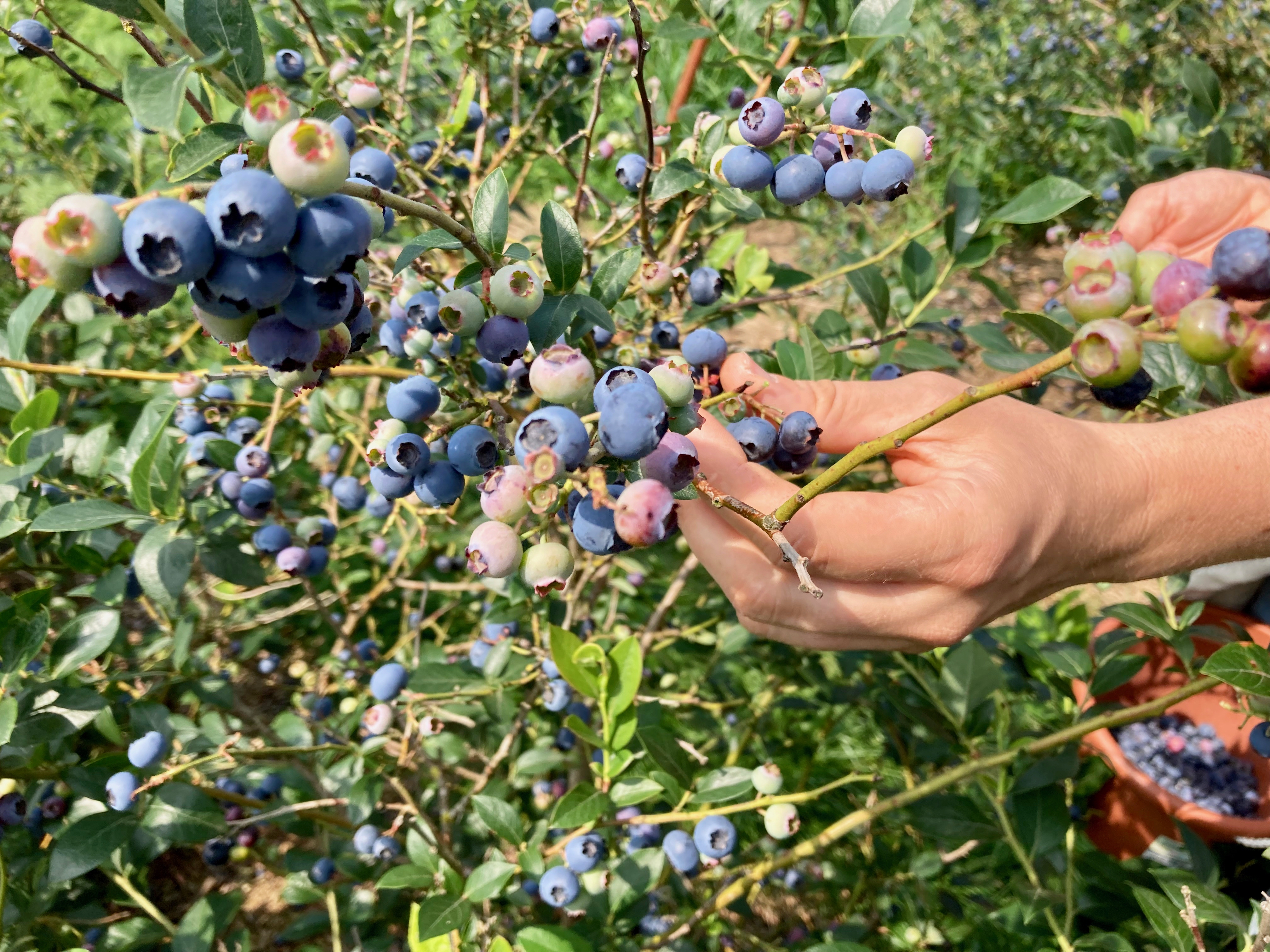The aim of the work was investigate the feasibility of blueberry cultivation in agroforestry systems from an existing system. The aim was to get insights on how the trees interact with the shrubs. This is done for the parameters light availability and soil-pH. Both factors are important for the cultivation of blueberries.
The thesis gives some insights, whether blueberry cultivation in combination with value wood production provides good yields of the fruit and at the same time, the financial value added is more rewarding compared to a pure forest area. In addition, it was discussed whether co-cultivation with forest trees significantly reduces the yield of the shrubs in order to test the system for its usefulness.
Finally, recommendations are given for the professional cultivation of blueberries in agroforestry systems, as there is no scientific documentation on the cultivation of this species in forest stands.
The following research hypotheses were formulated:
- H1: The trees present in the area create a pH value favourable for the cultivation of blueberries.
- H2: The cultivation of cultivated blueberries in combination with forest trees increases the yield of the bushes is increased by the positive effects of the trees.
- H3: The financial returns exceed the proceeds from pure forest management.
- H4: The implementation of the previous management measures does not differ from the information in the literature.

Conclusion
The cultivation of blueberries in agroforestry systems is possible in principle. However, the preparation of the soil must be taken into account in the planning. The pH value must be prepared for planting just as in a pure blueberry area. The choice of tree species is the next essential step in reliably ensuring the most important characteristics of the soil. Here, good experience with coniferous species can be observed, whereby especially the larch as a deciduous tree has some advantages. The stand should be loosely planned and planted, and branching the trees also promises more advantages than disadvantages, as the crowns allow more light to reach the soil. If the parameters of light and soil are sufficiently available, the next step should be the choice of varieties. At least two varieties favour pollination and yield. Cultivated blueberries can be cultivated conventionally, but organic concepts are also conceivable. However, further research is needed on possible allelopathic interactions for weed control and their effects on the berry bushes.

A correction or adjustment of the pH-value after planting does not seem to be necessary at the present state of knowledge, if the right tree species have been selected in advance. As is usual in forestry, the financial returns from forest management will cover the costs after several decades only.
A production of value timber with pruning of the trees can also lead to instability of the tree individuals. This factor must be taken into account in financial planning. The cultivated blueberry already provide increased yields after a few years, which justify their acquisition. The loss of berries by wild animals should, if possible, be prevented.
The maintenance of such an area exceeds the maintenance of a pure forest area with mixed tree regulation and thinning by far. However, this can be made profitable through additional economic value creation. The advantages and disadvantages are diverse. On the one hand, the plants on an area always compete for water, light and nutrients. On the other hand, physical interactions such as wind protection, biological interactions such as weed containment weed control or chemical interactions such as soil condition control, advantages can be created for blueberry cultivation through forest management. A good balance must be found.


Since the forest trees compete with the blueberry crop for this resource, the influence of this parameter on the yield of the blueberry plants was investigated with light measurements using a Solariscope at several points.
The cultivation of blueberry bushes on a controlled area without forest trees yields higher yields, but it also requires a greater input of materials and inputs, for example to regulate the regulate the pH value in the soil. The comparison of plantations and agroforestry systems should be investigated in more detail in a further step. Since there is no evidence so far for a detrimental influence of the trees on the shrubs on the vitality, it can be confirmed that this agroforestry system is feasible. There is a further need for practical testing and more in-depth research to clarify the last questions. The yield so far is lower than known from the literature, but it remains to be seen how the area will behave with ageing shrubs.
Paul Kilguss











